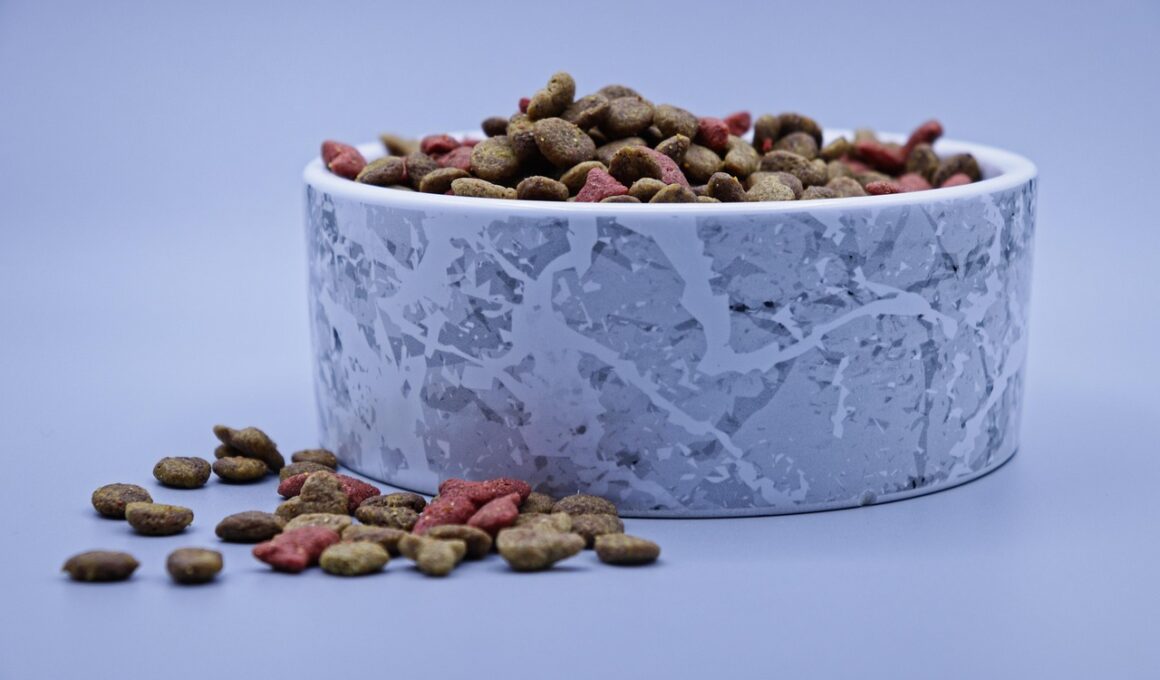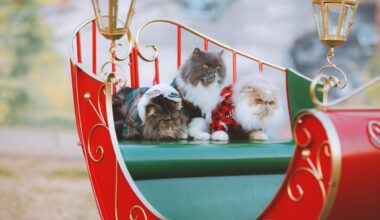Transitioning Your Cat to an Energy-Boosting Diet
Transitioning your cat to an energy-boosting diet can significantly improve their overall health and vitality. Cats are obligate carnivores, requiring a protein-rich diet to thrive. Start by introducing energy-boosting foods gradually to minimize digestive upset. You can begin with small portions of high-quality protein sources that are also packed with nutrients. Consider foods such as chicken, turkey, and fish, which provide substantial protein and fan favorites among felines. As you introduce these new foods, monitor how your cat responds. If they show signs of allergies or sensitivities, it’s crucial to revert to their previous diet and consult with a veterinarian. Mixing new food with existing food can smooth the transition and make it easier for your cat to adapt. Watch for reactions like gastrointestinal upset or changes in behavior, which might signal that adjustments are needed. Gradual changes over a week or so can often yield positive results without causing stress to your furry friend. Additionally, maintain hydration to support their digestion during the transition.
Alongside protein, consider adding healthy fats like omega-3 and omega-6 fatty acids to your cat’s diet. These fats are crucial for maintaining energy levels and supporting skin and coat health. Fish oils or supplements might be beneficial if you choose not to feed fish directly. Cats also need certain vitamins and minerals for complete well-being. Foods rich in vitamins can enhance energy levels and improve metabolic functions. Look for options like pumpkin, which is safe and nutritious, providing dietary fiber that aids digestion. You may also integrate small amounts of leafy greens, helping to optimize nutrient absorption. When introducing these additional foods, remember that moderation is key. Too much can lead to digestive issues; hence, start with small portions, observing how your cat reacts. It’s advisable to consult a veterinarian who can guide you in tailoring a specific dietary plan, especially if your cat has unique health concerns. This expert advice ensures a safe transition, incorporating suitable energy-boosting foods while considering any dietary restrictions your cat may have.
Essential Foods for an Energy-Boosting Diet
Several specific foods can greatly assist in boosting your cat’s energy. Lean meats such as chicken and turkey are excellent sources of protein. Fish such as salmon or sardines provide beneficial omega fatty acids, promoting not just energy but also skin and coat health. Cats often enjoy the taste of fish, making it an appealing option for many. Eggs are another fantastic energy source packed with protein, vitamins, and minerals that support a cat’s overall health. It’s important to prepare these foods properly, ensuring they are cooked without any harmful seasonings that can pose risks to their health. Adding small amounts of organ meats, like liver, can offer essential vitamins and minerals not found in muscle meats alone. Vegetables like peas or carrots, when cooked and mashed, can also supplement your cat’s nutrition with added fiber and nutrients. Always check with your veterinarian before making significant changes to ensure these foods align with your cat’s individual health requirements and dietary needs.
Transitioning your cat’s diet may require some trial and error to determine which foods they enjoy. Every cat has unique preferences, so engaging your feline friend in the process can be rewarding. Observe their reactions closely to identify the items they find most palatable. For example, if your cat shows enthusiasm for turkey but disinterest in chicken, prioritize turkey as their protein source. Some pet owners find that warming up the food slightly enhances its aroma and makes it more enticing. Also, mixing the new energy-boosting foods with their regular diet can encourage your cat to adapt more seamlessly. Gradual introduction spreads out their adjustment period, allowing them to get accustomed to flavors and textures. Watching for any adverse reactions during this transition is vital. If your cat seems uncomfortable or ill after a meal, it’s essential to consult your vet immediately. With patience and persistence, your cat will adapt to their new energy-rich foods and should feel more vibrant and active over time.
Feeding Schedule for Optimal Energy
Establishing a feeding schedule is just as crucial as choosing the right foods. Regular feeding times can help regulate your cat’s metabolism and energy levels. Consider giving them smaller, more frequent meals throughout the day rather than one or two large ones. This approach mimics natural hunting behaviors and can keep their energy levels stable. You can establish a schedule based on your daily routine that accommodates both your and your cat’s needs. Cats are creatures of habit and thrive on routines, so consistency will help prepare them for meal times. In addition to regular feeding, it’s important to note that hydration is key. Fresh water should always be available, as hydration plays a fundamental role in digestion and overall health. Experiment with different feeding methods such as puzzle feeders to make mealtime engaging and stimulating. These feeders can promote a healthy feeding pace, prolong mealtime, and encourage physical activity. Keeping track of how your cat responds to these schedules allows for adjustments as needed, maintaining energy and enthusiasm.
Additionally, the quality of the feeding environment impacts your cat’s mood and appetite. A calm and quiet area should be designated for feeding, free from distractions. This ensures that your cat can focus solely on their meal, enhancing their enjoyment and digestion. Monitoring their eating habits is essential. If your cat appears to be eating more slowly or shows reluctance towards their meals, it might indicate digestive issues or dissatisfaction with the food type. Observing these behaviors allows you to make timely adjustments while keeping their energy needs in mind. Some cats respond better to specific textures or temperatures in food. Conducting small tests can discover their preferences, aiding in tailoring a more suitable energy-boosting diet. A gradual transition and attentive observation create a smoother path for incorporating new food types. Always prioritize your cat’s welfare through this journey, consulting with your veterinarian as required. Following this approach can enhance your cat’s vitality while nurturing their overall health.
Monitoring Health During Transition
As you transition your cat to a new energy-boosting diet, it’s crucial to keep a close eye on their health and behavioral changes. Regular checkups with your veterinarian can help ensure that nutritional changes are not negatively impacting your cat. During this period, look for signs of allergies, such as itching, gastrointestinal upset, or lethargy. If any concerning symptoms arise, consult your vet immediately to evaluate if any dietary adjustments are necessary. Maintaining a food diary is a useful practice, allowing you to track what your cat eats and how they react. This record can provide insights into their likes and dislikes, facilitating better food decisions moving forward. Additionally, watch their weight. Any sudden weight loss or gain might signal an imbalance in their diet or other health issues. If you notice changes, have a conversation with your vet to adjust your transition plan. Ensuring your cat’s well-being throughout each dietary change is the top priority, promoting a long, healthy, and energetic life.
Lastly, remember that patience is key during this transition. Cats can be creatures of habit; they might take time to accept new foods and routines. Always approach changes gradually and gently, allowing your cat the time they need to adapt. Keep the environment positive by reinforcing good behavior with treats or praise when they try new food items. If possible, involve other family members in the feeding process, as their participation can help make your cat feel more comfortable with the changes. Over time, you’ll not only see improvements in their energy levels but also in their overall happiness. Curb frustration by reminding yourself that every cat is unique; some may adapt faster than others. Celebrate small victories, like your cat accepting a new food or showing increased energy during playtime. This entire journey of transitioning to an energy-boosting diet can reinforce the bond between you and your feline, fostering a healthier lifestyle through your shared experiences.


